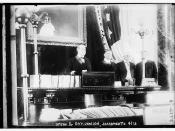Patriarchy in Pakistan
Pakistan belongs to a part of the world where a woman's status can be measured by indicators such as sex ratio, literacy levels, economic activity, labor-force participation, and women in government. The Constitution of Pakistan gives equal rights to both men and women. However in reality men have manipulated women to become more powerful than women. Men hold most top end positions in government while women rarely appear in positions of power. According to the "UN Statistics and Indicators on Women and Men" it can be seen the there is inequality amongst gender when it comes to participation in political decision-making and economic decision-making. It also portrays that in a Pakistani society, a woman's status is always lower than the male partner. She is deprived of a good education, food, health care and freedom of choice of partner, number of children and other essentials of life. These are some of the factors that play a role in the life expectancy, resulting in women living a shorter life than men.
In his book "What is this thing called Patriarchy" Johnson states that there are four characteristics of patriarchy that are rooted in the social structure of a society. The first characteristic is that there is a male dominated social system. This does not mean that all men are powerful or that all women are powerless but means in a position where someone has power it tends to be a male. The "UN Statistics and Indicators on Women and Men" show the statistics for the percentage of women legislators and women in parliament in Pakistan throughout the years, it can be seen that there hasn't been an increase at all. Instead women's share of legislators, senior officials and managers is a merely 3% and only 22% of parliamentary seats...


![[Portrait of Bunk Johnson and Maude Johnson, Stuyvesant Casino, New York, N.Y., ca. June 1946] (LOC)](https://s.writework.com/uploads/17/171599/portrait-bunk-johnson-and-maude-johnson-stuyvesant-casino-n-thumb.jpg)